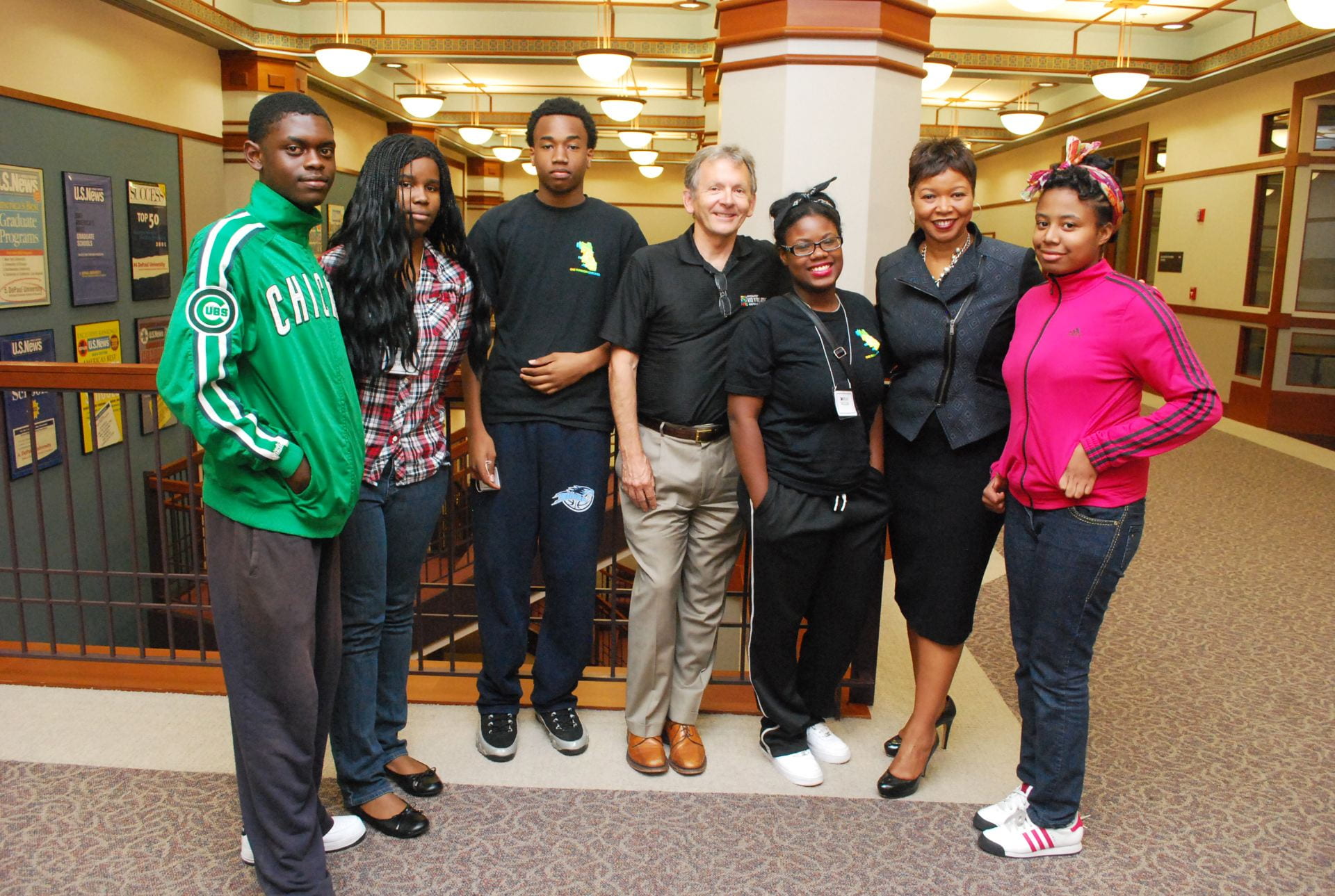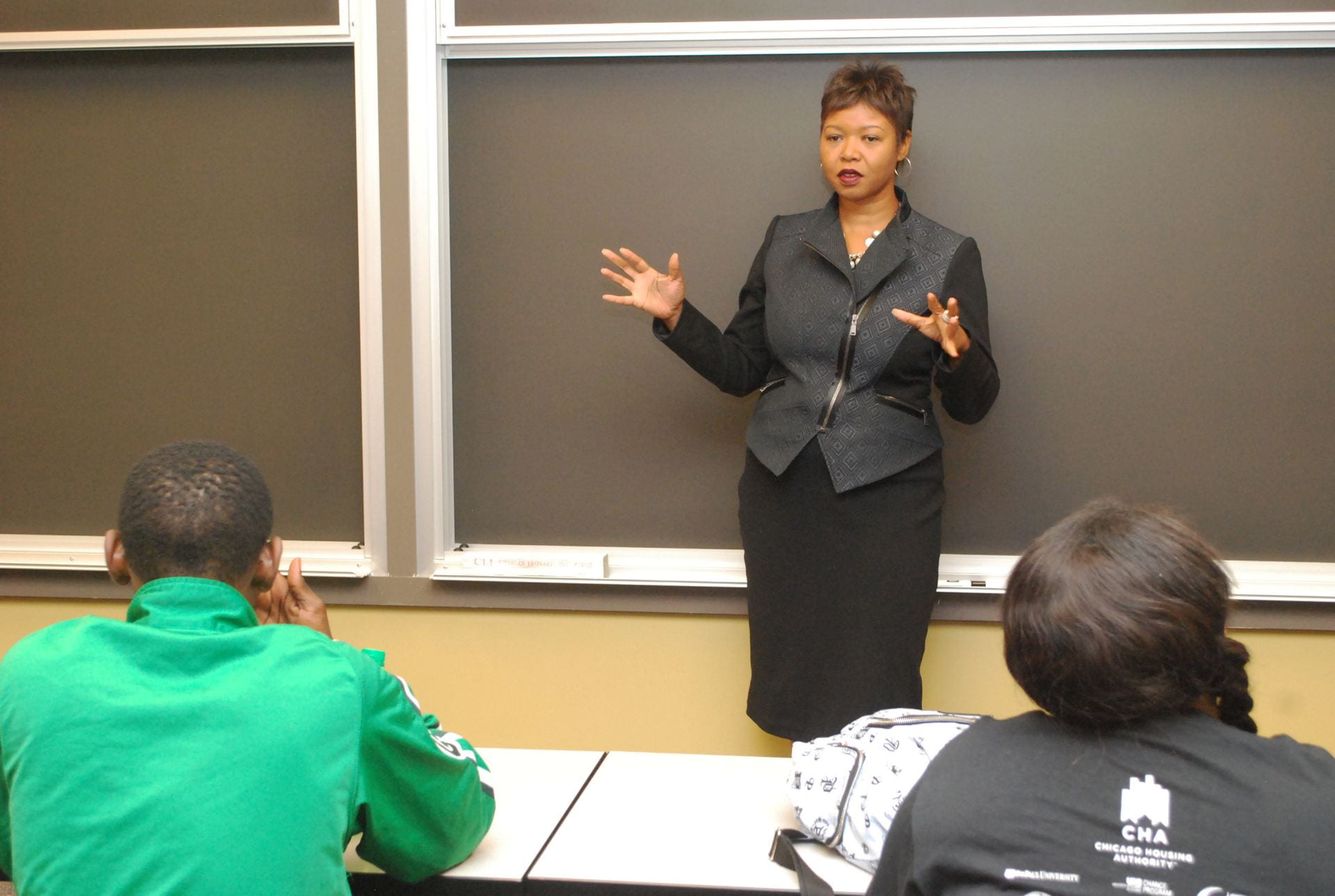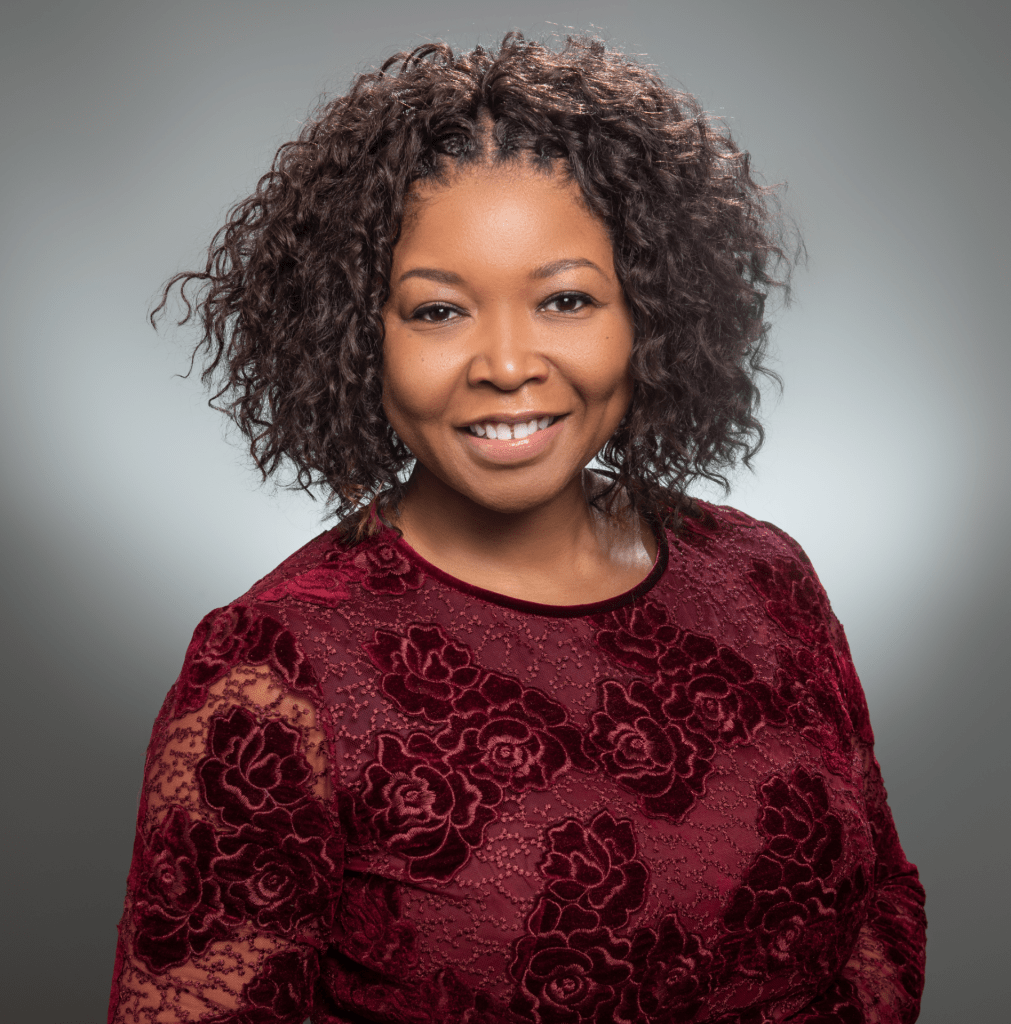
With our role as a strong corporate citizen, we want to be able to support our partners in doing their best work to the extent that we can.”
– Corliss Garner (BUS ’06)
Seven years ago, Corliss Garner (BUS ’96) returned to DePaul to address a group of high school students from underresourced communities as part of the university’s partnership with the Chicago Housing Authority. A Chicago native, Garner grew up in a West Side neighborhood, and wasn’t exposed to a diverse group of people until she entered high school. When she enrolled in DePaul to study finance, her exposure to diversity expanded.
As she spoke to the students, she encouraged them to think of their backgrounds as superpowers in their careers. She told them, “Your background and life experiences have taught you resilience and problem-solving skills. These are critical areas that will help you stand out and excel in any career path you choose.”
Now, Garner is in a new role that supports the advancement of employees with diverse backgrounds. After more than 20 years at BMO Harris Bank, Garner recently began working as the senior vice president and head of corporate social responsibility and diversity, equity and inclusion (DEI) at First Midwest Bank, the first position of its kind at the company. For the past year, Garner has channeled her professional, personal and civic experiences into building and executing a DEI strategy. She also oversees the bank’s philanthropic and community initiatives.

“My work is designed to strategically connect our role as a corporate citizen to support our employees, our clients and the communities we serve,” she says. “As First Midwest continues to grow and expand its footprint, the opportunity to strategically align this important work to our business objectives is a high priority for our company.”
First Midwest Bank recently made a $500,000 gift to DePaul’s John L. Keeley Jr. Center for Financial Services. Over the next five years, this gift will be used to diversify the Keeley Center’s student cohorts through outreach, targeted programming, scholarship support and internship placements at the bank.
“With our role as a strong corporate citizen, we want to be able to support our partners in doing their best work to the extent that we can,” Garner says. “Leading this partnership with the Keeley Center is a full-circle moment for me. It is an honor to work for a company that understands the value of providing more access to opportunity for diverse students.”

An active member of Chicago’s civic community, Garner has served on the advisory board of DePaul’s Coleman Entrepreneurship Center and is now a life director of the African American Legacy, an initiative that aims to improve the quality of life of African Americans in Chicago. Garner’s involvement in the community helped crystallize her passion for DEI work.
Not long after Garner started her new position at First Midwest Bank, social justice and racial issues began rattling communities throughout the United States. In the summer of 2020, thousands of people protested the death of George Floyd, who died at the hands of a Minneapolis police officer.
“The events of the summer certainly added a layer to my work. In many cases, those moments created the momentum needed to accelerate powerful and courageous conversations on race in America,” Garner says. “Even amidst all of the uncertainty and despair we experienced in 2020, I remain encouraged and hopeful, and look forward to progress.”
Below, Garner offers tips for building an effective DEI strategy:
- Start from the top. Commitment from the CEO and executive leadership team is key. Leaders set the tone, influence the organizational culture and provide the resources necessary to advance the strategy. Sometimes DEI efforts can get overshadowed by other business imperatives. It is important to recognize the DEI strategy as a priority and provide adequate funding.
- Empower champions. Choose individuals who can carry the DEI message throughout the organization. While senior leader messaging is critical, employee engagement is just as important. Employees embody the culture of an organization and can help provide valuable feedback and champion DEI more broadly.
- Overcommunicate. Everyone at the company has a role in driving the DEI agenda. Clearly communicate the goals and objectives of your program and tell people how they can get involved. It is crucial that employees have a stake in the success of the strategy and understand that everyone has a role to play.
- Keep up the momentum. Make sure you have a plan in place to advance your strategy and remember to communicate progress and wins. It’s the small steps and the work behind the scenes that keep the momentum going. Communicate broadly with your organization to help leaders and employees understand there is real work happening behind your public statements.
Want to explore more about this topic? Click here to view videos of virtual events hosted by the college featuring alumni and Chicago business leaders discussing diversity and the business community.
By Jaclyn Lansbery
